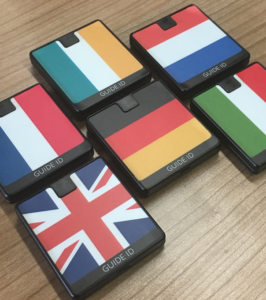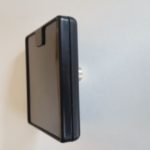There are a handful of different IDentifiers available. This page intends to distinguish them and explain what each of them is used for.
Object IDentifier
The Object IDentifier is the most basic of the bunch, but also the most common one. This type of IDentifier simply sends out an infrared code – the code is unique to each IDentifier, and is printed on the back of the device – which the Podcatcher can pick up and interpret. Codes look like “EF:FE:1C:AE”; four sets of two characters.
Object IDentifiers can be linked to one Stop per Tour, but can be used in multiple Tours. Further, they can’t be used as both a Start IDentifier and an Object IDentifier at the same time.
Usage
Write down the code printed on the back and link it to a Stop in the TourEditor. Place the IDentifier near the Stop – next to a painting, at the entrance to a room, and so on – and point the Podcatcher at it. The Podcatcher will now play that Stop’s content.
Battery lifespan
The battery on an IDentifier lasts for quite a while – under optimal conditions they can keep going for upwards of two years. They will eventually run out though, but it’s fairly simple to replace them.
 Start IDentifiers
Start IDentifiers
Start IDentifiers are essentially Object IDentifiers, but they have a flag printed on the label to designate which language they represent. A Start IDentifier, as the name implies, starts a Tour. Coupled with the flag, they represent the start of a Tour in a given language.
Start IDentifiers have the same kind of code as Object IDentifiers, but a Start IDentifier’s code can only be linked to a Site once – otherwise a Podcatcher wouldn’t know which Tour to start (or in which language).
Read more about starting a tour (and Start IDentifiers) here.
AV-Sync IDentifiers
AV-Sync IDentifiers are more complex than the Object IDentifier, because they need to send out IR signals not just for their IDentifier code, but also the time stamp for the video. To be more precise, they are connected to an AV-Sync box which does most of the legwork, but an AV-Sync IDentifier can’t operate on its own either way. Refer to the AV-Sync user manual for an in-depth explanation of what the AV-Sync IDentifier does and how it can be installed.
